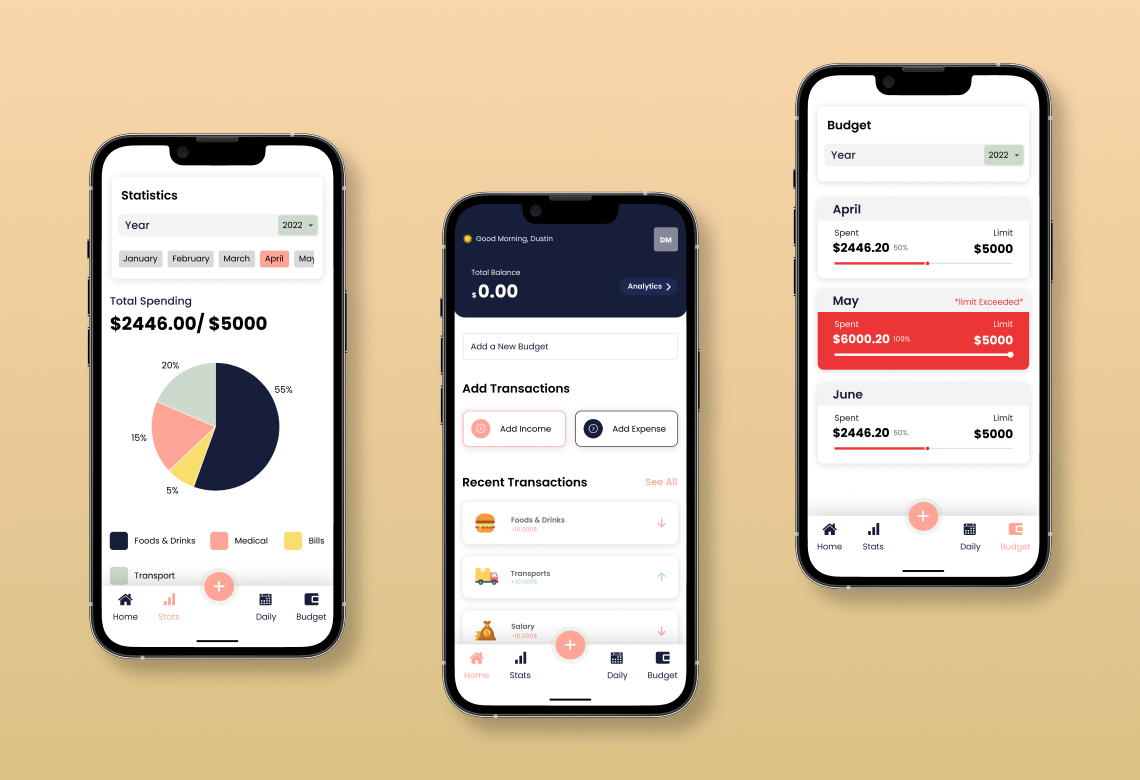Introduction
Infinance, an innovative personal finance and budgeting application, had a vision to empower individuals with smart, intuitive, and efficient financial management tools. With a deep understanding of modern financial habits and needs, Infinance aimed to create a highly accessible and user-friendly platform. The team chose React Native for application development and Figma for the design process, based on their extensive capabilities and collaborative features. This case study will dive into the development, challenges, solutions, and the resulting benefits of Infinance’s journey.
Pre-Development Scenario
Infinance realized that despite the presence of numerous financial management applications, there was a gap in the market for an intuitive, highly user-friendly, and all-in-one financial solution. Their goal was to create an app that not only allowed users to track their spending but also offered personalized budgeting advice, financial forecasts, and goal tracking.
App Development and Design Process
The development and design process was broken down into four key stages:
Planning: The team conducted extensive market research to understand user needs and preferences in the realm of personal finance management. This helped to guide the application’s features and overall functionality.
Design: Using Figma, a collaborative interface design tool, the UI/UX designers created a simple yet attractive interface. The designs focused on usability, ensuring the complex financial data was represented in a visually appealing and easy-to-understand manner.
Development: Leveraging the power of React Native, a popular framework for building mobile applications, the developers transformed the designs into a working application. React Native allowed for simultaneous cross-platform development, speeding up the process and maintaining consistency across different platforms.
Testing & Launch: Rigorous testing was performed on different devices and platforms to ensure optimal functionality, seamless user experience, and robust security. After successful testing, the app was launched on both the Google Play Store and Apple App Store.
Challenges and Solutions
Throughout the development process, the team faced a few challenges:
Data Security: Ensuring the privacy and security of users’ financial data was paramount. The team used encryption, secure APIs, and followed best practices for data security to overcome this challenge.
Complex Financial Calculations: Implementing complex financial calculations in a way that was accurate and reliable was crucial. The developers and financial advisors worked closely to ensure that these algorithms were correctly implemented.
Intuitive Design: Translating financial data into a user-friendly and intuitive interface was challenging. The design team made extensive use of graphs, color-coding, and interactive elements to represent data visually and intuitively.
Results and Benefits
Following the launch, Infinance saw significant benefits:
User Engagement: The intuitive design and comprehensive features led to high user engagement and positive reviews.
Data Security: Users appreciated the strong focus on data security, which boosted their trust in the application.
Increased Downloads: Thanks to its user-friendly interface and robust capabilities, Infinance witnessed a surge in downloads on both iOS and Android platforms.
User Satisfaction: The app’s ability to deliver personalized, actionable financial insights led to high user satisfaction and regular use.
Conclusion
Infinance’s successful journey from a concept to a fully-functional personal finance application illustrates the potential of tools like React Native and Figma in creating intuitive and powerful mobile applications. The combination of a well-researched development plan, a strong focus on user experience, and the use of modern development and design tools can result in applications that not only fulfill market needs but also stand out in a competitive landscape.
